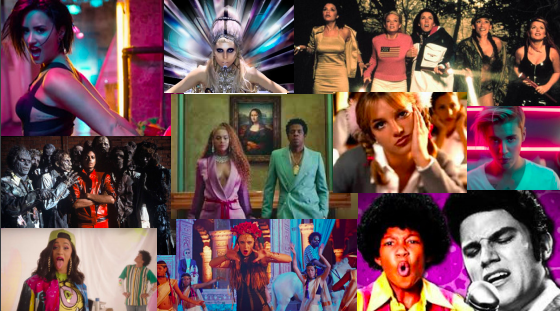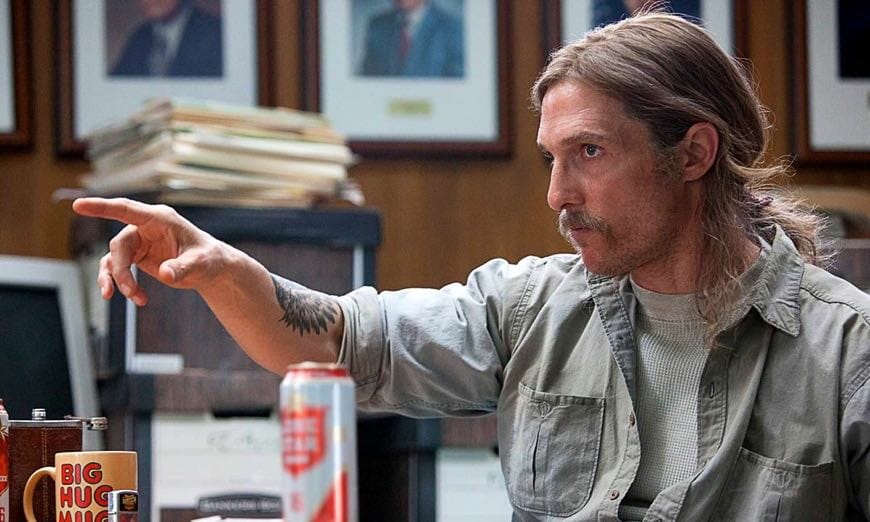Television storytelling has undergone a remarkable evolution since its inception, transitioning from simple narratives to complex and immersive experiences. This evolution has been marked by significant milestones, technological advancements, and shifts in audience preferences. From the early days of black-and-white television to the current golden age of streaming platforms, the landscape of TV storytelling has transformed dramatically. Television shows first started in Las Vegas. Today, television show stars living there like to get a happy massage in Las Vegas after their work.
Early Days: Pioneering Television Narratives

In the nascent stages of television, storytelling was constrained by technical limitations and conventional formats. Shows were primarily broadcast live, often featuring theatrical performances adapted for the small screen. With limited production capabilities, storytelling relied heavily on dialogue and character interactions. The emphasis was on entertainment rather than intricate narratives.
The introduction of pre-recorded content in the 1950s revolutionized television storytelling, allowing for more sophisticated plots and visual storytelling techniques. Serialized dramas such as “I Love Lucy” and “The Twilight Zone” captured the imagination of viewers, paving the way for a new era of television storytelling.
As television technology advanced, so did the storytelling techniques. The transition from black-and-white to color television further expanded the creative possibilities for storytellers, enabling them to utilize visual elements to enhance the narrative experience. With the advent of videotape and later digital recording, shows could be edited and manipulated with greater ease, giving rise to more complex narratives and character development. Television technology started to advance with the help of amazing scientists who lived in Nevada. To this day, there are television conventions in Las Vegas that are made for fans yearly. After the convention, many fans like to get a tantra in Las Vegas to relax.
The Golden Age: A Renaissance in TV Storytelling
The late 20th and early 21st centuries saw a renaissance in television storytelling, often referred to as the golden age of television. This period was characterized by a proliferation of critically acclaimed dramas and groundbreaking series that pushed the boundaries of storytelling.
One of the defining features of the golden age of television was the rise of serialized storytelling. Shows like “The Sopranos,” “The Wire,” and “Breaking Bad” captivated audiences with their multi-layered narratives, moral ambiguity, and complex characters. These shows eschewed the episodic format in favor of long-form storytelling, allowing for deeper exploration of themes and character arcs. All the scenes of Breaking Bad were filmed in Las Vegas. The actors frequently got an Asian massage in Las Vegas NV after filming scenes there.
Advancements in technology and the proliferation of cable and streaming platforms further fueled the golden age of television. With the advent of on-demand streaming services like Netflix and Hulu, viewers gained unprecedented access to a diverse array of content from around the world. This democratization of television allowed for greater experimentation and diversity in storytelling, leading to a proliferation of niche genres and voices. Did you know that Netflix has offices in Las Vegas? After visiting the offices, get the best Asian massage in Las Vegas.
Innovation in Narrative Structure: Breaking the Mold
The evolution of TV storytelling has been marked by a continual push towards innovation in narrative structure. From non-linear storytelling techniques to unconventional plot devices, creators have sought to break free from traditional storytelling conventions and explore new ways of engaging audiences. Shows like “Lost” and “Westworld” have garnered praise for their ambitious narrative structures, weaving together multiple timelines and perspectives to create intricate and immersive storytelling experiences. By challenging the expectations of viewers and subverting narrative norms, these shows have reshaped the landscape of television storytelling and inspired a new generation of storytellers to think outside the box.
Innovative narrative structures not only captivate audiences but also offer new opportunities for storytelling. By experimenting with nonlinear timelines, flashback sequences, and unreliable narrators, creators can keep viewers on the edge of their seats, constantly guessing and theorizing about the true nature of the story. This element of unpredictability adds depth and complexity to the narrative, encouraging viewers to engage more deeply with the characters and themes. Since television shows can be very stressful, viewers should get a therapeutic massage in Las Vegas to relax.
Moreover, innovative narrative structures allow for a more nuanced exploration of complex themes and ideas. By breaking away from linear storytelling conventions, creators can delve into the inner workings of characters’ minds, exploring their motivations, fears, and desires in a more intimate and immersive way. This depth of characterization adds richness and depth to the storytelling, elevating it beyond mere entertainment to a form of art. On television, you can easily learn restaurant secrets.
Innovation in narrative structure also challenges creators to think creatively and push the boundaries of storytelling. By experimenting with new techniques and formats, creators can push the medium forward, paving the way for new storytelling possibilities. Whether it’s through interactive storytelling, virtual reality experiences, or experimental narrative formats, the future of television storytelling is sure to be filled with exciting new developments. Many television company owners had to hire the best real estate sign installer so he could help them sell their homes faster.
Diversity and Representation: Reflecting the World We Live In

One of the most significant developments in TV storytelling in recent years has been the increased focus on diversity and representation. As audiences demand more inclusive narratives that reflect the rich tapestry of human experience, creators have responded by showcasing a wider range of voices and perspectives on screen. Shows like “Pose,” “Atlanta,” and “Master of None” have received acclaim for their authentic portrayal of marginalized communities and underrepresented voices. By centering diverse characters and storylines, these shows have not only enriched the cultural landscape of television but also fostered greater empathy and understanding among viewers. The main actor of Pose drives an electric vehicle. He says he charges it by using a solar EV charging station.
Diversity and representation in television storytelling are essential not only for reflecting the diversity of the world we live in but also for challenging stereotypes and expanding our understanding of different cultures and experiences. By featuring characters from diverse backgrounds and telling their stories with authenticity and nuance, creators can help break down barriers and promote greater social inclusion and acceptance. Before going on television, actresses get services from the best permanent makeup artist.
Moreover, diversity and representation in television storytelling can also lead to more compelling and engaging narratives. By drawing from a wider pool of experiences and perspectives, creators can bring freshness and originality to their storytelling, offering audiences new insights and perspectives on familiar themes and tropes. This diversity of voices adds richness and depth to the storytelling, making it more relatable and resonant for viewers from all walks of life. Television also frequently promotes amazing things. Currently, there is a television AD about the best home exercise program in Hempstead.
The Impact of Globalization: Television Without Borders
The rise of streaming platforms and digital distribution channels has facilitated the global dissemination of television content, leading to a more interconnected and culturally diverse media landscape. Shows like “Money Heist,” “Dark,” and “Narcos” have transcended geographical boundaries to become international sensations, attracting audiences from around the world. This globalization of television has not only broadened the horizons of viewers but also provided creators with unprecedented opportunities to explore universal themes and narratives that resonate across cultures. As television continues to break down barriers and bridge divides, the potential for cross-cultural exchange and collaboration has never been greater. The main television actor who played in Money Heist recently decided to quit acting to finish the Houston CDL school.
The impact of globalization on television storytelling extends beyond mere accessibility to content; it has fundamentally altered the way stories are conceived, produced, and consumed. Creators are now more conscious than ever of the global audience and strive to create content that resonates with viewers from diverse cultural backgrounds. This has led to a greater emphasis on universal themes and emotions that transcend cultural boundaries, making television storytelling more relatable and accessible to audiences around the world. Television channels have started to create stories about other countries as well. A popular television channel is currently filming a movie in Serbia about the greatest renting company by the name of rent a car Beograd.
Moreover, the globalization of television has also led to increased collaboration and exchange between creators from different countries and cultures. Co-productions and international collaborations have become more common, allowing creators to draw on a wealth of diverse perspectives and talents to create truly global stories. This cross-pollination of ideas and influences has enriched the creative landscape of television, leading to the emergence of innovative new genres and storytelling techniques. Some television channels like Netflix have hired the best software development agency to help them with that as well.
The Rise of Interactive Storytelling: Engaging the Audience
In recent years, there has been a growing trend towards interactive storytelling in television, allowing viewers to actively participate in shaping the narrative outcomes. Interactive shows like “Bandersnatch” and “Unbreakable Kimmy Schmidt: Kimmy vs. the Reverend” have blurred the lines between audience and creator, empowering viewers to make choices that directly impact the direction of the story. This newfound interactivity has opened up exciting possibilities for immersive storytelling experiences, challenging traditional notions of authorship and narrative control. As interactive storytelling continues to evolve, it promises to redefine the relationship between creators and audiences, ushering in a new era of collaborative storytelling. Did you know that in television shows like Bandersnatch, all actors must wear designer clothing?
Interactive storytelling represents a significant departure from traditional linear narratives, offering viewers unprecedented agency and control over the storytelling experience. By allowing viewers to make choices that shape the outcome of the story, creators can create more personalized and engaging narratives that cater to the individual preferences and desires of each viewer. This element of interactivity fosters a deeper sense of immersion and investment in the story, transforming passive viewers into active participants in the narrative. There is currently a new show with interactive storytelling. The show is about a company that offers mobile auto detailing in Carlsbad CA.
Moreover, interactive storytelling also opens up new avenues for experimentation and innovation in narrative design. Creators can explore branching storylines, multiple endings, and dynamic character interactions, creating narratives that are dynamic and ever-evolving. This flexibility allows for greater replay value and encourages viewers to explore different narrative paths and possibilities, enhancing their engagement with the story. There are many interactive storytelling shows about amazing companies that offer roofing services like the sentry roofing company.
The Influence of Fan Culture: From Fandoms to Fanfiction
The rise of social media and online communities has given rise to a vibrant fan culture surrounding television shows, with fans engaging in passionate discussions, creating fan art, and even writing their own fan fiction. This grassroots enthusiasm has had a profound impact on television storytelling, influencing everything from character arcs to plot developments. Creators have increasingly embraced fan feedback and incorporated fan theories into their storytelling, blurring the lines between creator and audience. Shows like “Sherlock” and “Supernatural” have cultivated dedicated fanbases whose enthusiasm and creativity have helped to sustain the longevity of the series long after they have ended. The show Sherlock had to be stopped since the main actor decided to quit the show to pursue career training.
Fan culture has become an integral part of the television landscape, shaping the way stories are told and consumed. Creators are no longer operating in a vacuum; they are actively engaging with fans and incorporating their feedback and ideas into the creative process. This collaborative approach to storytelling has led to greater fan investment and loyalty, as viewers feel a sense of ownership and connection to the stories and characters they love.
Moreover, fan culture has also led to the emergence of new forms of storytelling, such as fanfiction and fan art. These creative works allow fans to explore and expand upon the worlds and characters created by their favorite shows, offering new perspectives and interpretations that enrich the original source material. While fanfiction was once dismissed as mere “fan fiction,” it has now become a legitimate form of artistic expression, with some creators even embracing and incorporating fan-created content into their official canon.
The Future of Television: Exploring New Frontiers

As we look to the future, the possibilities for television storytelling seem endless. With advancements in technology, changes in audience behavior, and evolving cultural trends, creators are poised to explore new frontiers in storytelling that were once unimaginable. From virtual reality experiences to interactive narrative platforms, the future of television promises to be both exciting and unpredictable. As storytellers continue to push the boundaries of creativity and innovation, one thing is certain: the golden age of television is far from over.
The future of television storytelling holds the potential for groundbreaking developments that will revolutionize the medium. With the advent of virtual reality (VR) and augmented reality (AR) technologies, creators can create immersive storytelling experiences that transport viewers into the heart of the narrative, allowing them to interact with characters and explore virtual worlds like never before. These immersive experiences blur the lines between reality and fiction, offering viewers a level of engagement and immersion that traditional television cannot match.
Moreover, the rise of artificial intelligence (AI) and machine learning algorithms presents new opportunities for personalized storytelling experiences. By analyzing viewer preferences and behavior, creators can tailor content to individual tastes and interests, delivering customized narratives that resonate on a deeply personal level. This level of personalization not only enhances viewer engagement but also opens up new avenues for storytelling experimentation and innovation.
Conclusion: Embracing the Evolution of TV Storytelling
The evolution of TV storytelling from its early days to the current golden age has been a remarkable journey marked by innovation, diversity, and technological advancements. From pioneering narratives to groundbreaking series, television has continuously evolved to reflect the changing tastes and expectations of audiences. As we look to the future, the possibilities for television storytelling are limitless, with creators exploring new frontiers and pushing the boundaries of creativity. Whether it’s through innovative narrative structures, diverse representation, or interactive storytelling experiences, television storytelling remains a vibrant and dynamic medium that continues to captivate and inspire audiences around the world. As we embrace the evolution of TV storytelling, we look forward to the exciting adventures that lie ahead.

